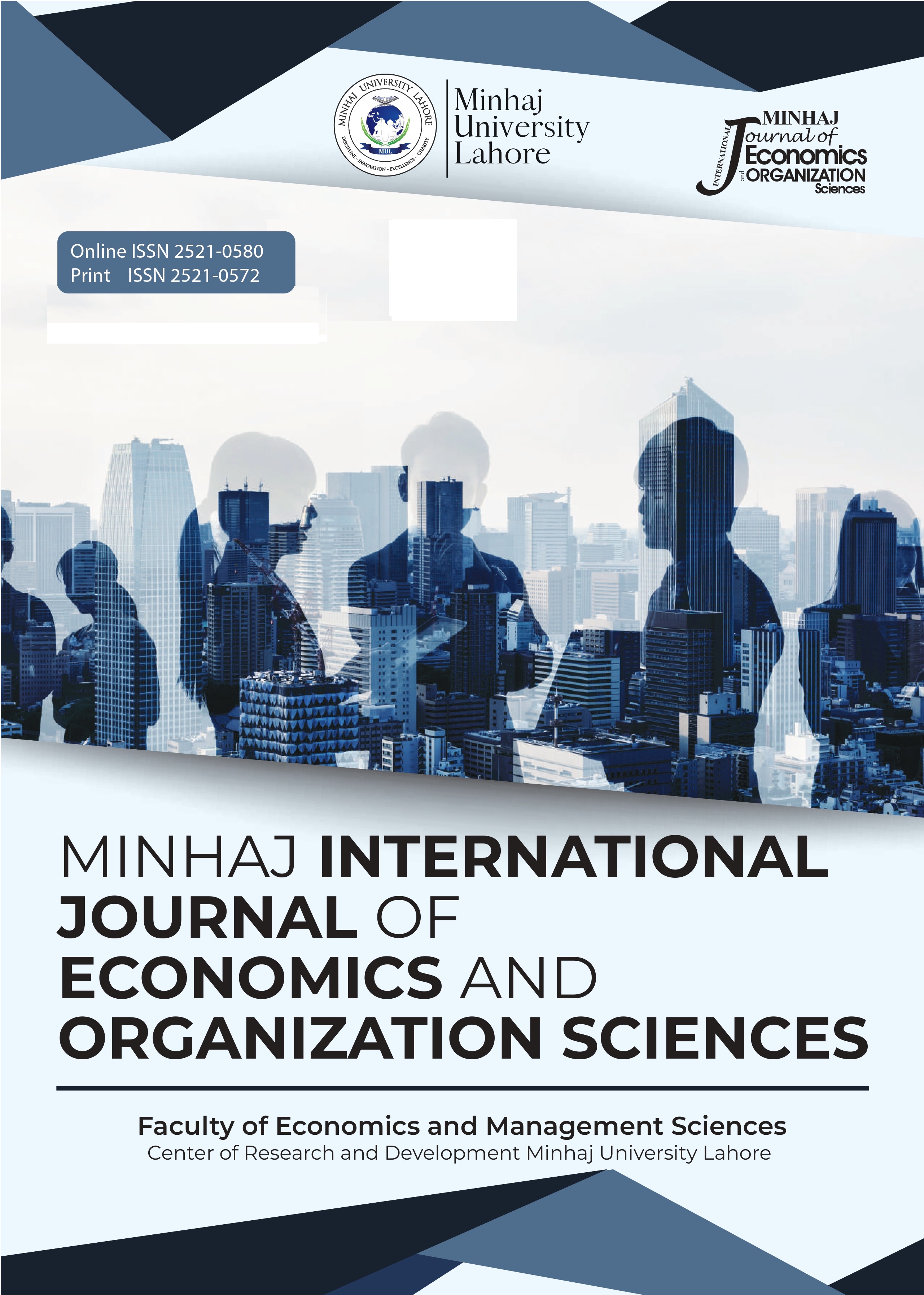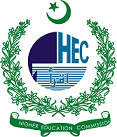Factors Influencing Capital Structure of Islamic Banks: A Case from the SAARC Region
DOI:
https://doi.org/10.58932/MULE0034Keywords:
Islamic Banks, Capital Structure, SAARC Region, Trade-off Theory, Correlation Matrix, GLS Regression AnalysisAbstract
The main aim of this study is to determine the elements that have an impact on the capital structure of Islamic banks in the SAARC region. Islamic banks are unique since they operate under the oversight of financial regulatory organizations such as state banks and Shari’ah compliance which are governing their financial activities and expected to influence Islamic banks’ capital structure decisions in comparison to their conventional counterparts. For this study, we built an empirical model to account for the interplay between our independent variables and leverage. From 2011–2021, 17 Islamic banks (IBs) in the SAARC area were used to evaluate the empirical model utilizing a panel data approach and GLS regression analysis with correlated disturbance. This study's empirical findings indicate that the leverage ratio of IBs is positively insignificant when controlling for profitability and non-debt tax shields. The leverage ratio of IBs is positively impacted by tangibility, liquidity, and the size of the bank. However, GDP per capita and growth are negatively insignificant to the leverage ratio. Future studies are suggested in certain ways, in terms of samples other regions and countries could be considered and it is also recommended to take into consideration other financial and non-financial institutes to check their capital structure decisions. Another suggestion is to explore other variables such as; artificial intelligence and corporate governance. Specifically targeting Islamic banks in the SAARC area, this research contributes to the current body of knowledge by offering empirical proof of the critical variables impacting the capital structure of these institutions.
References
Adawiyah, S., Badina, T., & Najib, M. A. (2022). Factors affecting the company's capital structure. Proceedings Book the Second International Conference on Islamic Economics, Islamic Finance, & Islamic Law (ICIEIFIL) 115-125.
Ahmad, A., Malik, M. I., & Humayoun, A. A. (2010). Banking developments in pakistan: A journey from conventional to Islamic banking. European Journal of Social Sciences, 17(1), 12-17.
Ahmad, F. & Abbas, Z. (2011). Role of firm’s level characteristics in determining the capital structure of banks: Evidence from the Pakistan banks. Interdisciplinary Journal of Contemporary Research in Business, 2(12), 201-216.
Ahmad, R., Ariff, M. & Skully, M.J. (2008). The determinants of bank capital ratios in a developing economy. Asia-Pacific Financial Markets, 15(3/4), 255-272.
Akbar, A., Ahmad, S., Ali, M., Fayyaz, M. T., Ali, I., & Bhatti, M. A. A. (2024). Employee Development and Training: How HRM Helps in Staying Competitive in the Changing Market Condition. Al-Qanṭara.
Ahmed, N., Ahmed, Z., & Ahmed, I. (2010). Determinants of capital structure: A case of life insurance sector of Pakistan. European Journal of Economics, Finance and Administrative Sciences, 24(24), 7-12.
Akhtar, M. F., Ali, K., & Sadaqat, S. (2011). Factors influencing the profitability of Islamic banks in Pakistan. International Research Journal of Finance and Economics, 66, 125-132.
Ahmad, S., Ahmad, A., Shair, W., & Bhatti, M. A. A. (2022). Unlocking Pakistan's Youth Potential: A Comprehensive Analysis of Youth Development Indices and Strategic Alignment with the UN Sustainable Development Goals. Journal of Professional Research in Social Sciences, 9(2), 80-95.
Al Balushi, Y., Locke, S., & Boulanouar, Z. (2019). Determinants of the decision to adopt Islamic finance: Evidence from Oman. ISRA International Journal of Islamic Finance, 11(1), 6-26.
Al Nasser, S. A. S., & Muhammed, J. (2013). Introduction to history of Islamic banking in Malaysia. Humanomics, 29(2), 80-87.
Al-Hunnayan, S. H. (2020). The capital structure decisions of Islamic banks in the GCC. Journal of Islamic Accounting and Business Research, 11(4), 745-764.
Amidu, M. (2007). Determinants of capital structure of banks in Ghana: An empirical approach. Baltic Journal of Management, 2(1), 67-79.
Amjad, S., Belal. & Tufail, S. (2013). What can be the determinants of capital structure of banking sector of Pakistan? Proceedings of 3rd International Conference on Business Management (ISBN: 978-969-9368-07-3).
Aremu, M. A., Ekpo, I. C., Mustapha, A. M., & Adedoyin, S. I. (2013). Determinants of capital structure in Nigerian banking sector. International Journal of Academic Research in Economics and Management Sciences, 2(4), 27-43.
Bidabad, B., & Allahyarifard, M. (2019). Assets and liabilities management in Islamic banking. International Journal of Islamic Banking and Finance Research, 3(2), 32-43.
Bukair, A. A. A. (2019). Factors influencing Islamic banks’ capital structure in developing economies. Journal of Islamic Accounting and Business Research, 10(1), 2-20.
Easterbrook, F. H. (1984). Two agency-cost explanations of dividends. The American Economic Review, 74(4), 650-659.
Fathoni, M. A., & Syahputri, T. H. (2021). Determination of Islamic capital structure: A literature review. JurnalIlmiah Ekonomi Islam, 7(1), 146-153.
Fauziah, F., Latief, A., & Jamal, S. W. (2020). The determinants of Islamic banking capital structure in Indonesia. Al-Tijary, 125-138.
Guizani, M. (2020). The determinants of capital structure of Islamic and conventional banks: An autoregressive distributed lag approach. Journal of Islamic Accounting and Business Research, 12(1), 131-147.
Guizani, M., & Ajmi, A. N. (2021). The capital structure decision of Islamic and conventional banks: Empirical evidence from Malaysia. Asia-Pacific Journal of Business Administration, 13(2), 216-234.
Gul, S., Khan, M.B., Razzaq, N. & Saif, N. (2012). How firm characteristics affect capital structure in banking and insurance sectors (the case of Pakistan). European Journal of Business and Management, 4(12), 6-15.
Harun, T. W. R., Kamil, N. K. M., Haron, R., & Ramly, Z. (2021). Bank liquidity risk and capital structure: A conceptual review of theoretical and empirical research on Islamic banking perspective. International Journal of Academic Research in Accounting, Finance and Management Sciences, 11(3), 539-553.
Husaeni, U. A. (2018). Determinants of capital structure in companies listed in the Jakarta Islamic index. International Journal of Economics, Management and Accounting, 26(2), 443-456.
Igbal, A. (2012). Liquidity risk management: A comparative study between conventional and Islamic banks of Pakistan. Global Journal of Management and Business Research, 12(5), 54-64.
Jensen, M.C. (1986). Agency costs of free cash flow, corporate finance, and takeovers. American Economic Review, 76, 323.
Kayo, E.K., & Kimura, H. (2011). Hierarchical determinants of capital structure. Journal of Banking and Finance, 35(2), 358-371.
Lim, T.C. (2012). Determinants of capital structure empirical evidence from financial services listed firms in china. International Journal of Economics and Finance, 4(3), 191-203.
Meckling, M.C.J.A.W.H. (1976). Theory of the firm: Managerial behavior, agency costs and ownership structure. Journal of Financial Economics, 3, 305-360.
Modigliani, F. & M. H. Miller (1963). Corporate income taxes and the cost of capital: A correction. The American Economic Review 53(3), 433-443.
Myers, S. C., & Majluf, N. S. (1984). Corporate financing and investment decisions when firms have information that investors do not have. Journal of Financial Economics, 13(2), 187-221.
Ozkan, A. (2001). Determinants of capital structure and adjustment to long run target: Evidence from UK company, panel data. Journal of Business Finance and Accounting, 28(1 2), 175-198.
Qureshi, M. ., Ikram, S. H. ., & Bashir, U. . (2024). Role of Financial Innovation in Enhancing the Meezan Bank’s Market Share: Evaluating the Perception of Regional versus Branch Level Employees. Bulletin of Business and Economics (BBE), 13(2), 647-655.
Rafaqat, M. ., Azad, F. ., Ahmad, S. ., Aijaz, K. ., Ikram, S. H. ., Bashir, U. ., Bhatti, M. A. A. ., & Saeed, S. . (2024). Impact of Governance and Strategy Performance on Employer Branding. Research Journal for Societal Issues, 6(2), 852–867.
Rajan, R.G. & Zingales, L. (1995). What do we know about capital structure? Some evidence from international data. The Journal of Finance, 50(5), 1421-1460.
Rammal, H. G., & Parker, L. D. (2013). Islamic banking in Pakistan: A history of emergent accountability and regulation. Accounting History, 18(1), 5-29.
Rehman, M.A., Jaziri, D., Bashir, U. (2022). Gender, Disability, and Social Identities in Tourism Research in Africa: Bibliometric Insights. In: Woyo, E., Venganai, H. (eds) Gender, Disability, and Tourism in Africa. Sustainable Development Goals Series. Palgrave Macmillan, Cham. https://doi.org/10.1007/978-3-031-12551-5_5
Shair, W., Tayyab, M., Afzal, H., & Bashir, U. (2024). Determinants of Utilization and Satisfaction: An Empirical Analysis of Agricultural Extension Services in Pakistan. International Journal of Agriculture Innovations and Cutting-Edge Research, 2(4), 41–51
Salman, A., & Nawaz, H. (2018). Islamic financial system and conventional banking: A comparison. Arab Economic and Business Journal, 13(2), 155-167.
Sbeiti, W. (2010). The determinants of capital structure: evidence from the GCC countries. International Research Journal of Finance and Economics, 47, 54-79.
Setyawati, I., Suroso, S., Suryanto, T., & Nurjannah, D. S. (2017). Does financial performance of Islamic banking is better? Panel data estimation. European Research Studies Journal, 20(2A), 592-606.
Toumi, K. (2019). Islamic ethics, capital structure and profitability of banks: What makes Islamic banks different? International Journal of Islamic and Middle Eastern Finance and Management, 13(1), 116-134.
Toumi, K., Louhichi, W., & Viviani, J. L. (2012). Alternative financial decision principles: Theoretical foundations of Islamic banks’ capital structure. France, University of Montpellier, Motpellier.











